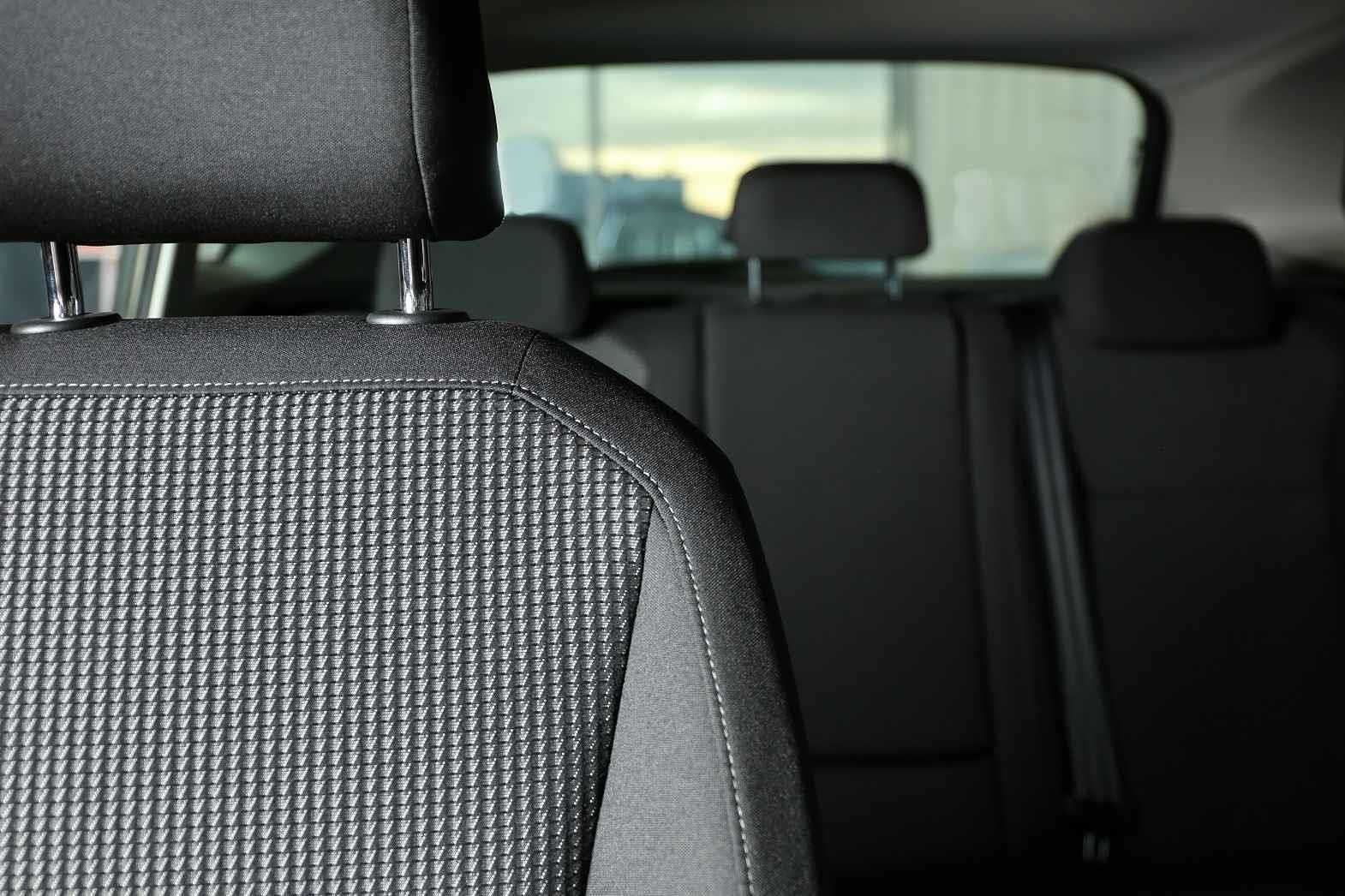The role of textiles is evident when one looks at the seats, carpets, and other interior fabrics, but the textile's involvement is more than what meets the eye. Apart from conventional uses as headliners, etc., textiles are also being used as tire cord, fuel filters, safety belts, airbags, and as a reinforcement material for composites. Automotive textiles include textile components like fibers, filaments, yarns, and fabrics used in automobiles. Some of these components are easily visible in the automobile, while others are concealed. Upholstery, carpets, seat belts, roof liners, etc., are easy to point out, and tire cords, composites including bumpers, side panels, etc., and rubber-reinforced components like hoses and filters, airbags, etc., are concealed. An average car needs an estimated 45 square meters of textile material.
The fabric used in upholstery can be polyester, wool, nylon, or acrylic. The main performance factors are abrasion and UV resistance, attractive design, and texture. For tire cords and fabrics, tensile strength, adhesion to rubber, and fatigue resistance are important factors. The fabric used for tire cords can be polyester, nylon, rayon, steel, or aramid. In the case of composites, factors such as stiffness, strength, lightweight, and energy-absorbing properties are to be considered, so the fabric used is polyester or thermally stable polyethylene. Fiber composites have replaced heavier metal components, significantly reducing the weight of the vehicle.
Another factor to remember is that hoses, belts, and air springs must have heat resistance, tensile strength, dimensional stability, adhesion to rubber, and chemical resistance, so polyester or aramid are suitable choices. Airbags must have the ability to withstand high-temperature inflation gases, durability for storage in a compacted state over many years, so nylon is a great option. The carpets must have lightfastness and moldability, which can be achieved with nylon, polyester, or polypropylene.
Apart from regular textiles, non-woven fabrics are also used by the automobile industry. Non-wovens are textile fibers that are not produced on conventional looms or knitting machines but are held together by some other mechanical, chemical, or thermal bonding method. Non-woven fabric is extensively used in air and oil filters, bonnet liners, and as production aids during manufacture.
There are several modifications that the modern automobiles have gone through. Today the headliners include driving mirrors, interior lights with wiring, assist handles, sun visors and sunroofs. The headliners not only contribute to the overall interior appearance, but are also significant for sound and vibration insulation.
The airbags have also seen major transition in recent years. The first airbags used nylon 66 and were covered by neoprene rubber, but in effort to make bags both lighter and thinner to fold up into a compact pack, silicon coatings were introduced. A small amount of nylon 6 is used which is softer, minimizes skin abrasion and has better packing compactness.
The face fabrics for door casings are also important, as they contribute to the overall look of the automobile. The fabrics for door casings are similar to the fabrics used for the seating and in a lot of cases the same material is used for both the applications in the same car. The textile/polyurethane foam laminate is almost invariably used on a door casing in combination with a film made from TPO or poly vinyl chloride (PVC). At the bottom of many car doors is a piece of non-woven covering material, usually a needle-punched polyester or polypropylene felt. The parcel shelves also depend on the textile. Parcel shelves that are also known as package trays are roofed with needle-punched non-wovens mainly made from polypropylene or polyester.
The sun visors are fashioned from warp knit fabric or poly vinyl chloride (PVC). They are produced by injection moulding, or composed of metal frames and rigid foam or cardboard are also used. As sun visor is close to the windscreen therefore UV, light and heat resistance must be of highest standard.
In case of the contemporary bonnet liners, polyester or polypropylene is used to make recycling possible and to get riddance from the fibreglass, which is a likely skin irritant. The cabin air filters have also seen positive changes. As per the recent researches conducted worldwide it was revealed that the air quality inside a car can be poorer than the air quality outside. Bearing this in mind, the cabin interior air filter has been developed. Non-wovens are used in cabin air filters and these filters firstly filter out solid particles mechanically through fine pores in the non woven fabric and then by imparting an electrostatic charge to the fibre pull solid particles electrostatically. The third method is by the use of activated carbon which absorbs gases and is therefore also capable of removing odours. The latest advanced filters combine both mechanical filtering through polypropylene non-woven electrets fabric with absorption by activated carbon.
The modern day tyres used in automobiles have replaced woven fabric by a unidirectional arrangement of cords. The cords are formed by bending yarns together to build up a strong cord in two or three separate operations. The radial tyre comprises of about 4-7 percent of its total weight of textile material whereas cross-ply tyre contains about 21 percent of the same.
In addition to the major components there are numerous other textile items such as sewing threads, fastening devices, tie cords, and flocked fabric on window seals and even in the battery as electrode separators.
The future modifications in the technical textile in automobile will be influenced the safety of drivers and environment. The role of automobile textile in protecting the environment comes to fore, as lighter weight fabrics can mean better vehicle performance. High-performance materials are also being developed by fibre and chemical companies, such as ultra-high-strength polyethylene fibre and the thermoplastic polyolefin foils.
If these developments will be successful, the future will be steady for progressive automobile industry that is heavily dependent on textile for better results.
References:
1. Progressivemaharashtra.com
2. Scribd.com








Comments